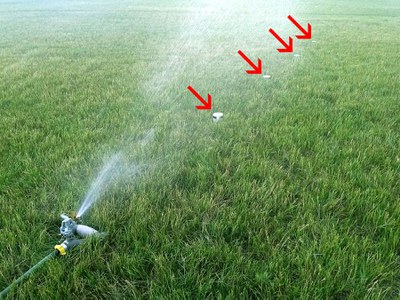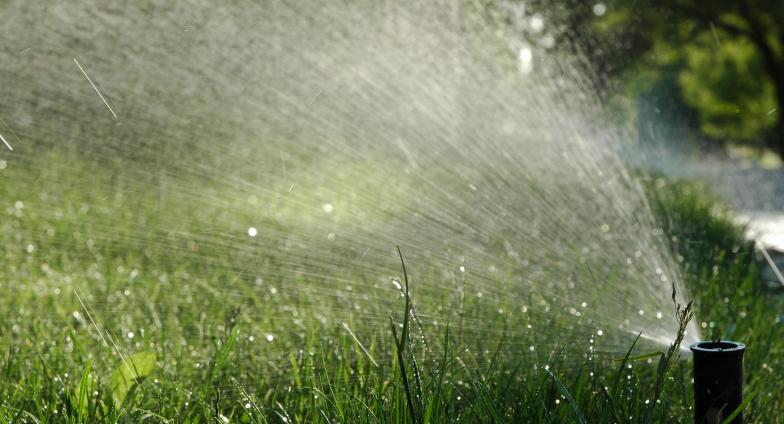The Right Way to Water Your Lawn
Can you enjoy a green lawn in summer without an expensive water bill? Let’s discuss how you can make every drop of water count.
To keep your lawn green and growing, it needs about 1 inch of water per week from you, rainfall or a combination of both.
To measure how much is 1 inch of water, set a group of flat-bottomed cups at 5- to 10-foot intervals from the base of your sprinkler to the edge of its reach. Measure the time an inch of water takes to fall in the cups. Use this as your base time.

Water deeply.
Giving your lawn a big gulp of water is better than giving it a series of sips. Roots grow where the water is. If you water deeply, you will develop a deep root system. On the other hand, if you only sprinkle the surface of the soil, you will create a shallow root system.
If you have a clay soil, irrigate only once or twice a week. Sandy soils can’t hold a full inch of water, so we will need to split the application to two or three times a week.
Split applications are also a good idea if you see water running off from the lawn (for example, on a sloped landscape). We want the water to be absorbed and not to run off.
Water in the early morning.
The grass plants will be active and will absorb the water they need. Any extra water will evaporate, keeping the grass blades dry and preventing diseases. Watering during the middle of the day is not recommended since much of the water you apply will evaporate before the plants absorb it. Watering is the evening is not recommended since the lawn will stay wet all night, leading to diseases.
Mow properly.
This makes a big difference. Mow tall and let the grass clippings fall. Tall turf naturally develops a deeper root system. The tall grass blades and the grass clippings will shade the soil, keeping it cooler and conserving moisture. The first lawns that turn yellow in a neighborhood are lawns that are cut short and where clippings are collected.
Monitor your automatic timer.
These “set it and forget it” systems are convenient, but they sometimes irrigate the lawn when it’s not needed. Only irrigate when the lawn is dry. Don’t irrigate when it’s raining or when rain is expected. Rain sensors and soil moisture sensors are available that prevent irrigation systems from running when rain is falling or when the soil is moist.
Improve your soil.
Adding organic matter can help. The next time you aerate the lawn, fill in the holes with some compost or peat moss. In clay soils, this organic matter will open the soil, helping water infiltrate rather than run off. In sandy soils, this organic matter will help the soil hold onto the water before it drains away.
Use the natural alternative.
You have the option of not watering your lawn at all. Your lawn will turn yellow gradually and go dormant. Going dormant under intense heat is natural for lawns. Lawns will turn green again in the fall when temperatures cool.
Whether you irrigate your lawn or not, you can have a healthy lawn without breaking your bank account. Irrigate only when needed and make every drop count.
Written by Tom Kalb, Extension Horticulturist, North Dakota State University.
